What are the flavor characteristics of Costa Rican Rose Summer Coffee and Soybean Honey treatment and those of Panama Rose Summer
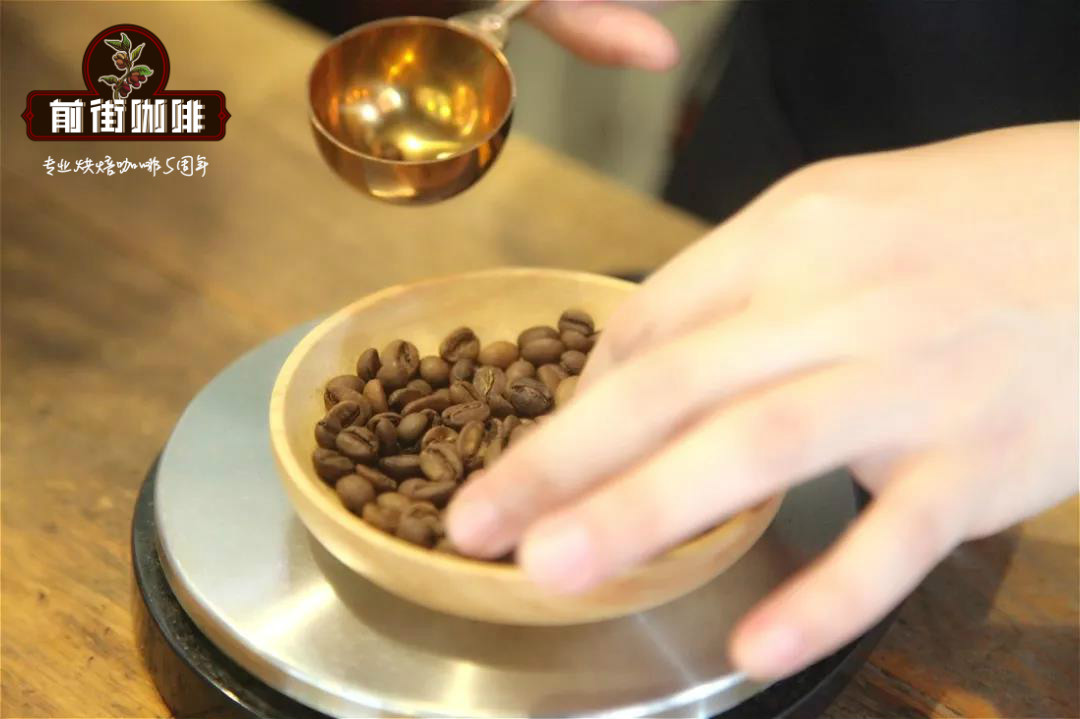
Professional coffee knowledge exchange more coffee bean information please follow the coffee workshop (Wechat official account cafe_style)
Qianjie just started a rose summer with honey treatment a few days ago. Today, I would like to share this rose summer with honey treatment with you. The rosy summer produced by the manor in Panama is generally a very traditional washing or sun treatment, this honey treatment should also be to try! As for what kind of flavor performance, Qianjie of course can be compared with three curves, and the final choice is No. 3 curve. After brewing, it is found that the flower aroma is very obvious, the entrance is obvious citrus and lemon flavor, and then it will turn into cream-like delicacy and sweetness, and finally the finish shows the tea feeling of green tea and sugar-like sweetness.
Origin of Rose Summer
1931: a team of botanists visited southwestern Ethiopia and discovered rose beans near the village of Geisha. They brought Geisha seeds to Kenya and planted them in nurseries. 1936: Geisha seeds spread to Uganda and Tanzania. 1953: CATIE, a Costa Rican research institute, obtains some Geisha seeds from Tanzania for research. 1960: Pachi Serracin, the old owner of Don Patch Manor in Panama, brings Rose Summer to Panama from Costa Rica. Later, the Emerald Manor in Panama separated it from other varieties and won the national coffee competition.
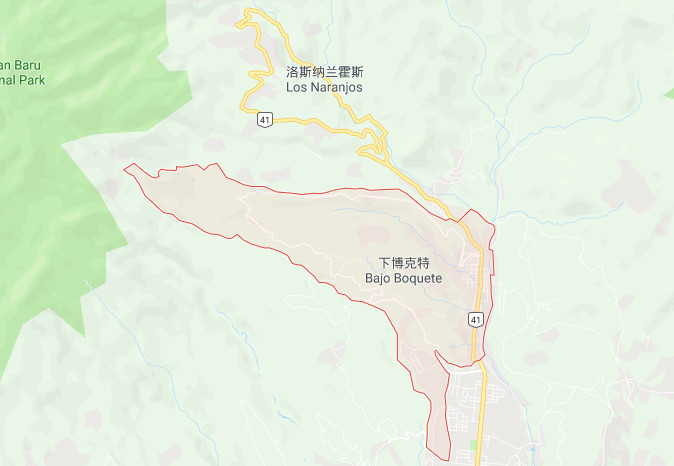
Panamanian Pocket
Panama is a Central American country bordered by Costa Rica to the west and Colombia to the east. Anyone who knows anything about individual coffee should know that Panamanian coffee is famous in the coffee world as the geisha Geisha (the name of Rosa) in the Emerald Manor. It can be said that it is a country that strives for excellence in coffee and is rich in high-quality coffee. Poquet Boquete is a town of Chiriqui in Chiriki province, located near the border between Panama and Costa Rica, near the famous Baru Baru volcano, the scenery is beautiful, the soil is fertile and the climate and soil are suitable for producing quality coffee.
There are many excellent estates in the Pokuit producing area, except the famous Emerald Manor, Arida Manor, Catova Duncan Manor and so on, all of which produce high-quality boutique coffee. This is not only due to the superior ecological conditions of the Pokuit region of Panama and the fertile volcanic ash soil of the Baru volcanic land. Another important factor is that the microclimate in the Poquet Heights of Panama is a unique and important resource for boutique coffee in the Pokuit region. This is the Panamanian environment from east to west that allows cold air to converge above 6500 feet through the Central Mountains, thus creating a variety of microclimates in the Pokuit region, making its temperature and rainfall very suitable for plant growth. so the coffee trees grown here grow very well.
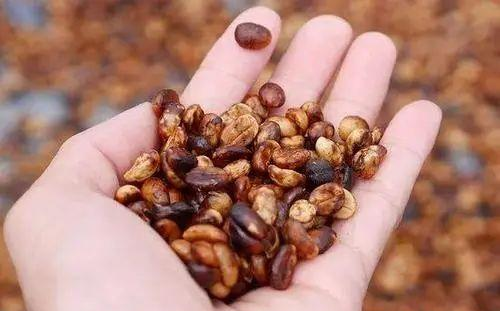
Treatment method
This bean is treated with honey. Honey treatment is a process of making raw beans by sun-drying with mucous membranes. After the outer pulp of the coffee bean is removed, there will be a layer of sticky jelly. In the traditional washing method, clean water will be used to wash it away, but because of the limitation of water resources in some high-altitude areas, this method of drying directly with pectin has been born. Honey-treated beans need good ventilation when they are dried. Otherwise, the retained pectin mucosa is easy to ferment or mildew, which leads to the taste difference between stinky honey treatment and water washing treatment: higher sweetness than water washing, higher sugar content. Alcohol thickness is also relatively higher (under the premise of the same baking degree)
Analysis of raw beans of Qianjie coffee
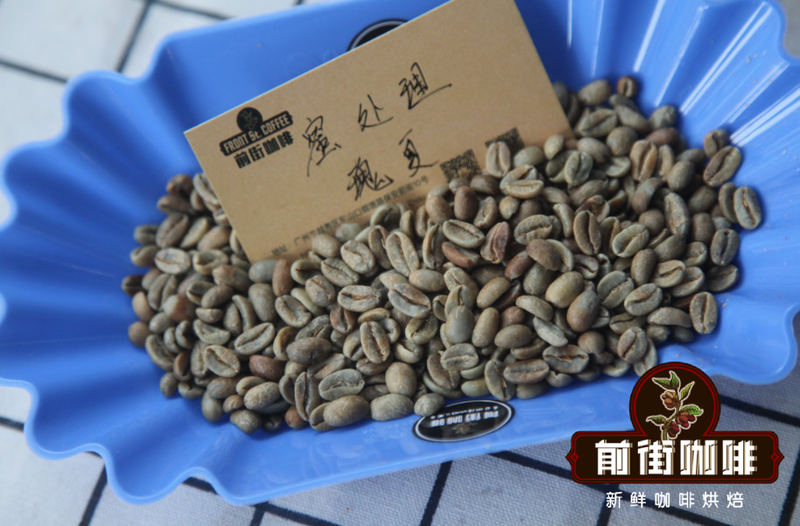
The variety of this bean is the rose summer variety. Raw beans look like typical honey-treated coffee beans, yellowish green; they smell like apples. Rosa coffee is the original species of Arabica, particularly picky about the growing environment, requiring high altitude, cloud shade, fertile soil and enough accumulated temperature.
Roasting Analysis of Qianjie Coffee
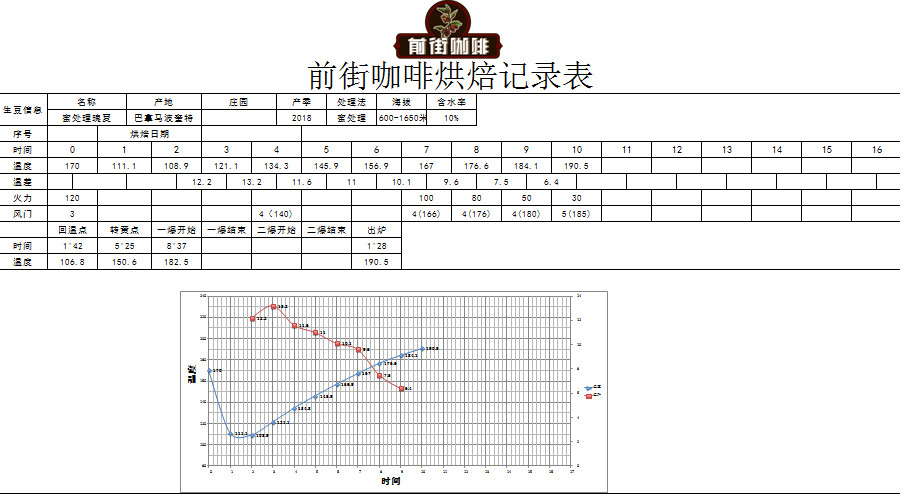
The temperature of the soy bean is 170℃, the yellow point is 5pm 39th 25 ", the first explosion begins at 8pm 39th 37", the temperature is 182.5 ℃, the temperature of one explosion development is 1mm 39th 28 ", the temperature is 190.5 ℃.
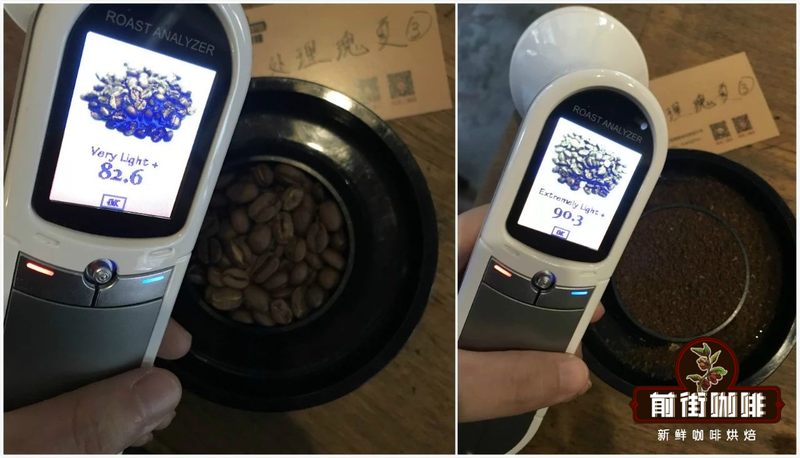
Agtron bean color value is 82.6 (left), Agtron pink value is 90.3 (right), Roast Delta value is 7.7.
Qianjie coffee cup test
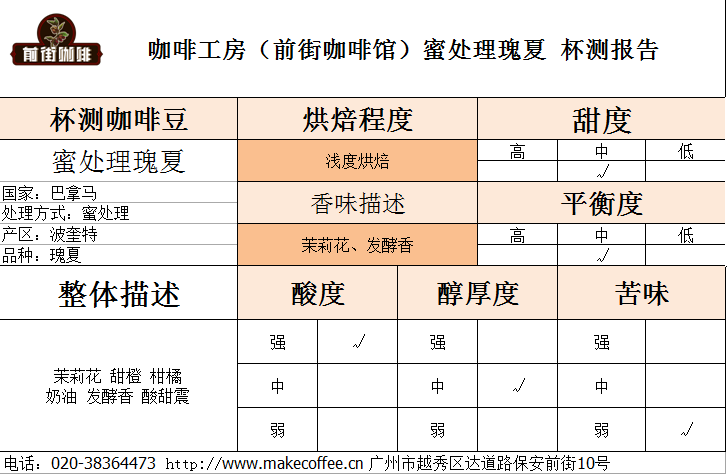
When sipping, it has the flavor of lemon, plum, sweet orange and cream, with the aroma of jasmine and fermentation, with oolong tea at the end.
Panamanian honey treats rose summer
Country: Panama
Producing area: Pokuit
Treatment: honey treatment
Altitude: 1600-1650 m
Variety: rose summer seed
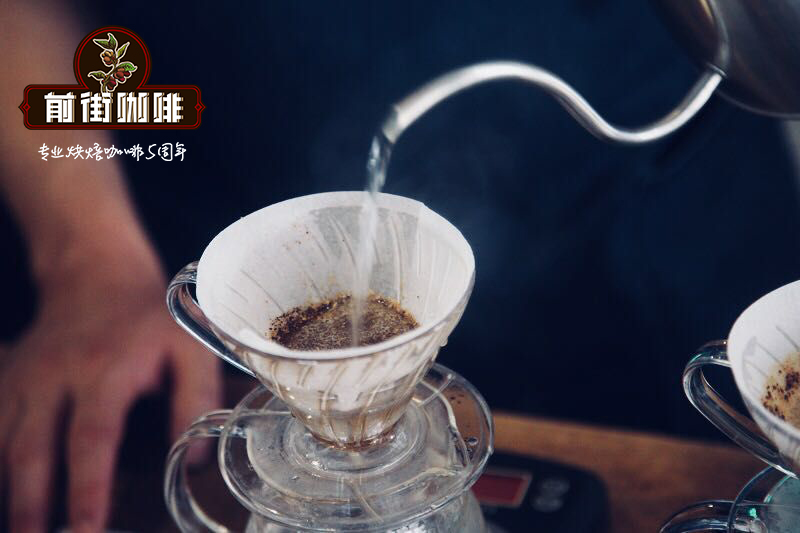
Qianjie coffee hand brewing parameters water temperature: 90 ℃; medium and fine grinding: BG-6L (Chinese standard 20 sieve pass rate of 80%); filter cup: Hario V60; powder-water ratio: 1:15.
Qianjie coffee technique: segmented extraction. Steam for 30 seconds with 35 grams of water, cut off the water when injecting water to 130 grams, continue to inject water to 230 grams when the water level is about to be exposed to the powder bed, remove the filter cup when the water level is about to expose the powder bed, and the extraction time is two minutes.
Flavor description: it smells fermented and floral, with sour notes of citrus and lemon in the mouth, creamy sweetness in the middle, green tea in the end, sugar and honey.
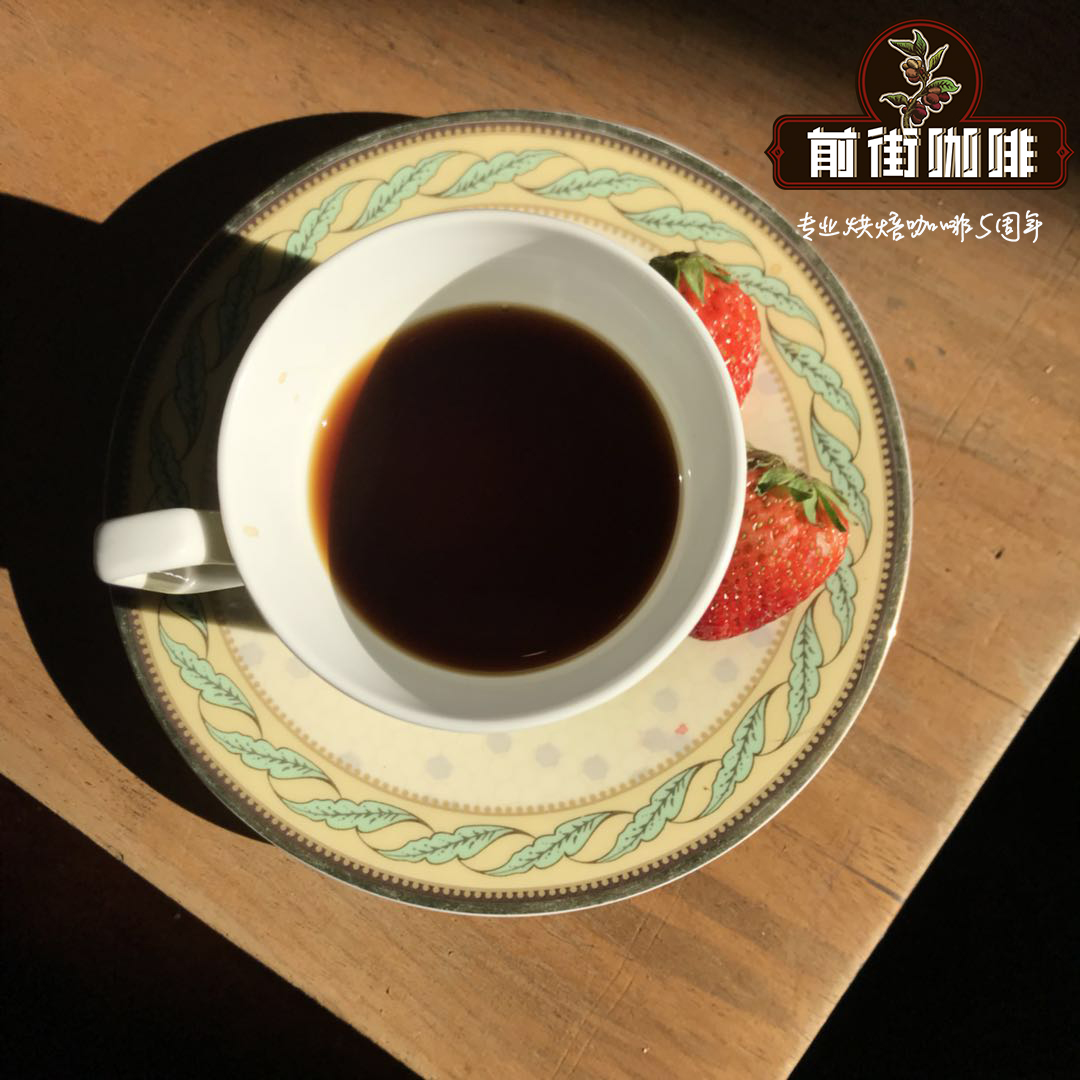
End
Important Notice :
前街咖啡 FrontStreet Coffee has moved to new addredd:
FrontStreet Coffee Address: 315,Donghua East Road,GuangZhou
Tel:020 38364473
- Prev
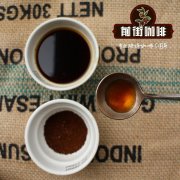
Fine processing of Costa Rican Coffee Honey processing method
Professional coffee knowledge exchange more coffee bean information please follow the coffee workshop (Wechat official account cafe_style) Costa Rica's boutique coffee has only begun to emerge in the past decade. Although Costa Rica introduced coffee from Cuba as early as 1729 and carried out commercial cultivation, it made great efforts to develop the coffee bean industry. But it is mainly the production and allocation of comprehensive coffee.
- Next
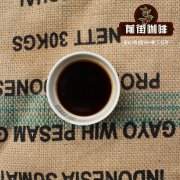
Why is cold coffee so popular in recent years? It's not hard to make homemade cold coffee, yo.
Professional coffee knowledge exchange more coffee bean information please follow the coffee workshop (Wechat official account cafe_style) Why cold coffee is so popular in recent years? Its manufacturing principle is very simple, as long as it takes a long time to extract the essence of coffee powder with cold water, on the contrary, because the cold water is mild, it will only extract the aroma of coffee powder and will not force out coffee beans.
Related
- Detailed explanation of Jadeite planting Land in Panamanian Jadeite Manor introduction to the grading system of Jadeite competitive bidding, Red bid, Green bid and Rose Summer
- Story of Coffee planting in Brenka region of Costa Rica Stonehenge Manor anaerobic heavy honey treatment of flavor mouth
- What's on the barrel of Blue Mountain Coffee beans?
- Can American coffee also pull flowers? How to use hot American style to pull out a good-looking pattern?
- Can you make a cold extract with coffee beans? What is the right proportion for cold-extracted coffee formula?
- Indonesian PWN Gold Mandrine Coffee Origin Features Flavor How to Chong? Mandolin coffee is American.
- A brief introduction to the flavor characteristics of Brazilian yellow bourbon coffee beans
- What is the effect of different water quality on the flavor of cold-extracted coffee? What kind of water is best for brewing coffee?
- Why do you think of Rose Summer whenever you mention Panamanian coffee?
- Introduction to the characteristics of authentic blue mountain coffee bean producing areas? What is the CIB Coffee Authority in Jamaica?

